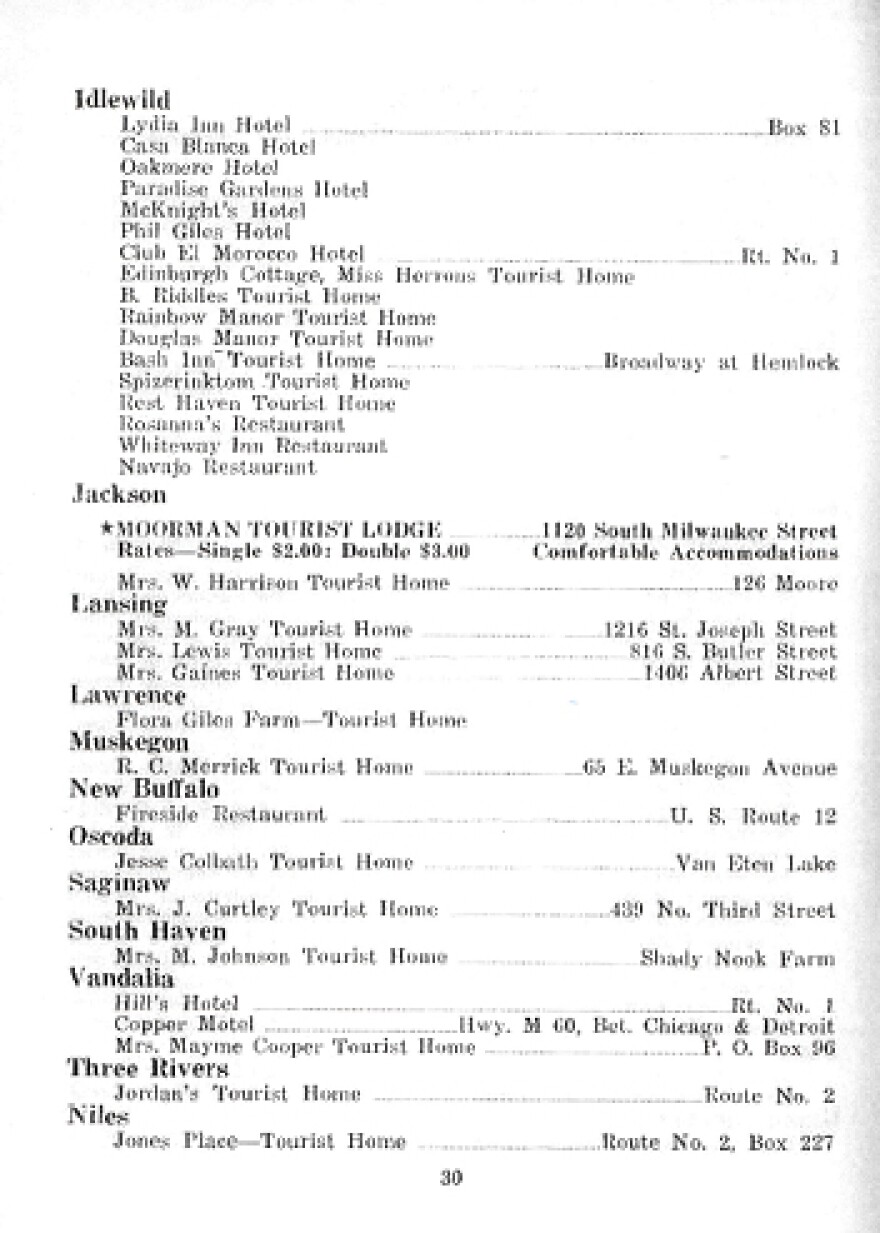Imagine you’re on a long family trip. Only you can’t stop for the bathroom. You can’t stop to eat or stay at a hotel. There are only a handful of places you can go and they could be several hours apart. That’s what family trips were like for African Americans in the Jim Crow era, from the 1930s to the 1960s.
Judith Griffin now lives in New Jersey, but her family would drive from Chicago to Idlewild resort in Michigan every summer. Griffin recalls one trip where her father—one of the few black gastroenterologists at that time—pulled over to save the lives of motorists in a very bad accident.
“When the ambulance finally arrived, we followed the ambulance to the hospital. And my father was going to go into the hospital and talk to the doctors and nurses about what he had done and what he had seen. And, you know, give them a report," Griffin explains. "And they would not allow him to go in.”

Because of discrimination, families like Griffin’s were forced to use what was called “The Green Book.” It was a directory of stops that would serve African Americans on the road.
The Gilmore Car Museum has a new exhibit on this book, including a copy from 1956. In it, the Michigan locations only take up one page front and back.
Michael Spezia is the executive director of the Gilmore Car Museum. He says many African Americans were forced to pack their cars to avoid making stops on trips.
“If you were traveling say from Chicago to New Orleans, I mean that would be—back at that time there were no interstates—that would be at least a three or four day trip. So they had to bring enough food to carry them all the way," says Spezia.
"They would bring portable potties for the kids and for the women. And they would only be able to stop at specific gas stations, and other gas stations would just send them on their way. So they had to be pretty much self-contained. And they would sleep in their cars as well.”

Because her family was more affluent, Griffin says her father usually found better lodging on his long trips. He would often go to the South where they needed physicians to care for black patients.
“He usually stayed with a family and often it was the…if there was historically black college, he would often stay at the president’s house,” says Griffin.
Spezia says about the only gas station available to black Americans in the country was Standard Oil, owned by John D. Rockefeller. Rockefeller’s wife was a strong abolitionist.
“We’re all convinced—though it doesn’t say it specifically anywhere—that she influenced her husband to open up Standard Oil, or what was called Esso at that time, to black business people," Spezia says.
"So that they could open their own Esso gas stations and also make Esso gas stations welcoming places for black, traveling Americans.”

Spezia says the museum hopes to have the exhibit open for several years to come. It features video accounts from Griffin and others about their travel experiences.
Griffin says many people do not have the full picture of what being black was like before the Civil Rights Movement.
“And the more people that understand that and are brought to face with it…face to face with it, specifically through a document or something that relates to an interest they have—which in this case would be automobiles and automobile travel—the easier I think it will be for them to try to understand the angst with which African Americans live day to day. And to the extent that they’re interested in…that they can help to see that some of this—you know, that we still have progress.”
You can see the Green Book exhibit at the Gilmore Car Museum. The museum is open most days from 9 a.m. to 5 p.m.




